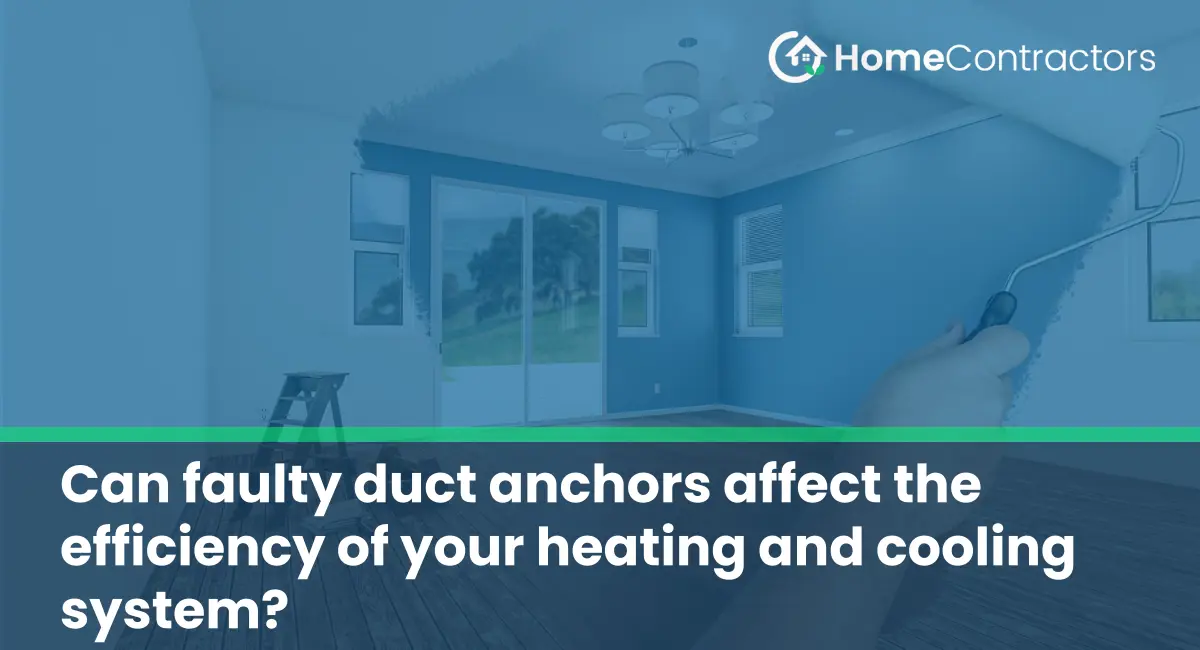Duct anchors refer to the hardware used to secure air ducts in place. They are typically made of metal and are installed at regular intervals along the ductwork to prevent movement, vibration, and potential misalignment. Properly securing the ductwork is essential to maintain optimal airflow and ensure efficient heating and cooling in your home or office.
The Importance of Proper Duct Anchoring:
1. Maintaining Airflow Efficiency:
Properly anchored ducts ensure that air flows unobstructed throughout the system, preventing leaks and minimizing pressure drops. When ducts are not securely fastened, they may become loose over time due to vibration or inadequate installation, leading to gaps or disconnections. These gaps disrupt the airflow and can result in conditioned air escaping into unconditioned spaces, reducing overall system efficiency.
2. Minimizing Energy Loss:
Faulty duct anchors can lead to air leakage, causing conditioned air to escape before it reaches its intended destination. This air loss requires the system to work harder to compensate for the loss, resulting in increased energy consumption, decreased energy efficiency, and higher utility bills. Properly anchored ducts ensure that the conditioned air is delivered precisely where it is needed, minimizing energy wastage and saving you money in the long run.
3. Preventing System Imbalance:
When ducts are not securely fastened, minor movements or vibrations can cause imbalances in the system. Imbalances can disrupt air distribution, resulting in uneven heating or cooling throughout your space. This not only compromises comfort but also puts unnecessary strain on the HVAC system as it tries to compensate for these imbalances. Properly anchored ducts maintain system balance, ensuring consistent temperature distribution across all rooms.
Inspection and Maintenance:
Regular inspection and maintenance of duct anchors are crucial to ensure their ongoing effectiveness. Here are some key steps to consider:
1. Visual Inspection:
Inspect your ductwork periodically to identify any signs of movement, gaps, or loose anchors. Look for visible damage, such as rust or corrosion, which can compromise the integrity of the anchors. Address any issues promptly to prevent further damage and improve system efficiency.
2. Tightening and Reinforcement:
If you notice loose or damaged duct anchors, it is important to tighten or replace them as necessary. Reinforce the surrounding areas if they have become weakened or compromised, ensuring a secure and stable anchoring structure.
3. Professional Assistance:
Seeking professional HVAC assistance is highly recommended for comprehensive inspection and maintenance. HVAC technicians can conduct a thorough examination of your ductwork, identify any issues with the duct anchors, and provide necessary repairs or replacements. They also have the expertise to ensure that the anchors are correctly installed and meet the manufacturer’s specifications.
Faulty duct anchors can have a significant impact on the efficiency and performance of your heating and cooling system. Ensuring proper installation, regular inspection, and maintenance of duct anchors are all essential steps in maximizing energy efficiency, improving airflow, minimizing energy loss, and promoting balanced temperature distribution throughout your space. By paying attention to these often-overlooked components, you can enhance the overall performance of your HVAC system and enjoy a more comfortable and energy-efficient indoor environment.
